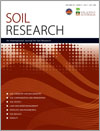SR16136Effects of strategic tillage on short-term erosion, nutrient loss in runoff and greenhouse gas emissions
In long-term no-tillage soils with controlled-traffic farming, occasional strategic tillage for weed control can have negative environmental effects. In a field study, greenhouse gas emissions and water, sediment and nutrient loss in runoff after heavy rainfall were measured as being similar or higher immediately after strategic tillage compared with no-tillage systems, particularly on a sodic soil. The trade-offs between weed control, erosion and greenhouse gas emissions should be considered as part of any tillage strategy.




